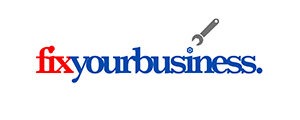When your business is facing challenges, deciding on the best approach to address them can be daunting. Two common options are attempting a do-it-yourself (DIY) turnaround or seeking professional assistance. But how do you know which is the right choice for your business? Let’s explore the pros and cons of each:
DIY Turnaround Solutions:
DIY turnaround solutions involve identifying and implementing strategies to improve your business’s performance on your own. This approach may appeal to business owners who prefer to maintain full control over the process and who have the time and resources to dedicate to the effort.
Pros:
- Cost Savings: DIY solutions can be more cost-effective than hiring professional assistance, especially for small businesses with limited budgets.
- Direct Involvement: Business owners have direct involvement in the turnaround process, allowing them to tailor strategies to their specific needs and preferences.
- Learning Opportunity: Attempting a DIY turnaround can be a valuable learning experience for business owners, providing insights into their business’s strengths, weaknesses, and areas for improvement.
Cons:
- Limited Expertise: Business owners may lack the expertise and experience needed to implement effective turnaround strategies, potentially leading to suboptimal results.
- Time-Consuming: DIY turnarounds require significant time and effort, which may detract from other core business activities.
- Risk of Failure: Without professional guidance, there’s a higher risk of failure, as business owners may overlook critical factors or make missteps along the way.
Professional Turnaround Solutions:
Professional turnaround solutions involve hiring experienced consultants or turnaround specialists to assess your business’s situation and develop and implement a tailored turnaround plan. This approach provides access to specialized expertise and support throughout the process.
Pros:
- Expert Guidance: Professional turnaround specialists bring expertise and experience to the table, ensuring that strategies are well-informed and effectively executed.
- Efficiency: With professional assistance, turnaround efforts are typically more efficient and streamlined, minimizing the time and resources required to achieve results.
- Higher Success Rate: Professional turnaround solutions tend to have a higher success rate, as consultants can identify and address issues more comprehensively and effectively.
Cons:
- Cost: Hiring professional assistance can be costly, especially for businesses with limited financial resources.
- Dependency: Relying on external consultants may create a dependency on outside expertise, limiting the business’s ability to address future challenges independently.
- Loss of Control: Business owners may feel a loss of control over the process when working with external consultants, potentially leading to conflicts or disagreements over strategy implementation.
Ultimately, the choice between DIY and professional turnaround solutions depends on factors such as the complexity of the challenges facing your business, your available resources, and your comfort level with relinquishing control over the process. By carefully weighing the pros and cons of each approach, you can make an informed decision that sets your business on the path to recovery and success.

